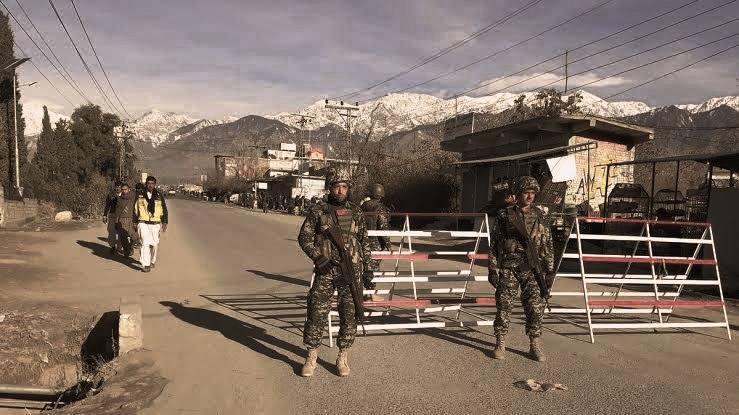
The recent outbreak of sectarian clashes in the newly merged district of Kurram has resulted in a staggering toll, with dozens of lives lost and an equivalent number left wounded. While official reports indicate approximately 120 casualties, conversations with Kurram residents suggest that the actual figure exceeds 200, with the majority being Shia.
The genesis of the ongoing conflict can be traced back to Boshehra village in Upper Kurram, where hostilities erupted about five weeks ago between the Sunni Bangsh tribe and the Shia Turi tribe. The catalyst for this strife was a controversial video leak that deeply offended religious sentiments. Although Kurram has a history marked by sectarian and tribal disputes, the current clashes distinguish themselves by the unprecedented use of advanced heavy weaponry.
What sets these clashes apart is not only the scale of violence but also their prolonged duration, lasting for weeks on end. This prolonged conflict has laid bare the vulnerabilities of the district administration and law enforcement agencies, revealing significant shortcomings in their ability to manage and mitigate such crises effectively.
For those unfamiliar with the region, Kurram is divided into three Tehsils: Upper Kurram, Central Kurram, and Lower Kurram. The epicenter of the current clashes lies in Upper Kurram, primarily inhabited by a Shia population.
Kurram District is home to several major tribes, including Bangash, Turi, Orakzai, Ali Sherzai, Mamozai, Muqbil, Zazai, Paracha, Mangal, Ghilzai, Para Chamkani, Hazara, Afridi and the Persian-speaking Khoshi tribe. The district's demographic makeup is approximately 60 percent Sunni and 40 percent Shia.
Individuals from the Sunni perspective articulated the belief that a military operation is imperative in Upper Kurram. They argue that inhabitants have stockpiled significant weaponry, and a proactive military intervention is necessary to secure these arms, preventing their potential use in future clashes.
Geographically, Kurram shares borders with Afghanistan to the north and west, Kohat to the southeast, North Waziristan to the south, and Khyber and Orakzai districts to the east. Its strategic significance is underscored by its proximity to Kabul, which has made it a crucial area historically. The Haqqani Network, known for its involvement in attacks against US-led forces in Kabul, has utilized Kurram in the past as a strategic base for its operations.
On November 21, a grand Jirga was convened at the Deputy Commissioner Compound in Sadda, Kurram tribal district, aimed at addressing the persistent challenges arising from sectarian-induced disputes. The event unfolded under the vigilant security provided by the district police. During the Jirga proceedings, a thorough deliberation took place with the objective of formulating a lasting resolution to the local conflict and enhancing security in the region with the active involvement and oversight of the security forces.
Emphasis was placed on fostering collaboration among all stakeholders, including the administration and security forces. The overarching goal was to establish a framework for sustained cooperation that could effectively eradicate unrest from Kurram district on a permanent basis. The significance of collective efforts and a unified approach was underscored, recognizing that only through a coordinated strategy could a lasting solution be achieved for the region's complex challenges.
Residents from both factions, with whom this correspondent engaged in conversation, conveyed their shared apprehensions regarding the temporary nature of the official Jirga's intervention in halting the clashes. Individuals from the Sunni perspective articulated the belief that a military operation is imperative in Upper Kurram. They argue that inhabitants have stockpiled significant weaponry, and a proactive military intervention is necessary to secure these arms, preventing their potential use in future clashes. It is noteworthy that Upper Kurram stands as the sole Tehsil that has been exempt from previous military operations in the former Federally Administered Tribal Areas (Ex-FATA). Members of the Shia faction vehemently reject the allegation that they have stockpiled weapons in their areas, dismissing it as entirely baseless.
The anxiety within the community stems from the realization that the introduction of extremist ideologies could exacerbate an already precarious situation, intensifying the existing sectarian strife.
This sentiment reflects a broader concern among the residents that the cessation of hostilities achieved through the Jirga may only be a short-term solution, and a more comprehensive approach, such as military oversight, is crucial to address the root causes and prevent the rekindling of tensions in the future. The call for military involvement underscores the urgency felt by certain community members in mitigating the risk of renewed conflict and ensuring a more lasting resolution to the underlying issues.
As of now, there have been no reported involvements of Tehreek-e-Taliban Pakistan (TTP) or the Islamic State of Khurasan (IS-K) in the ongoing conflict. However, local concerns loom large as residents fear that the IS-K could exploit the current situation, introducing its rigid ideology to the already volatile landscape of Kurram district. This apprehension raises the specter of heightened sectarian tensions, potentially leading to additional human and material losses on both sides of the conflict.
The anxiety within the community stems from the realization that the introduction of extremist ideologies could exacerbate an already precarious situation, intensifying the existing sectarian strife. Vigilance and preemptive measures are thus deemed imperative to prevent the infiltration of external extremist elements that could further inflame tensions and escalate the conflict in Kurram district. The repercussions of this unrest underscore the pressing need for comprehensive measures to address the root causes and improve the resilience of the region against future conflicts.

